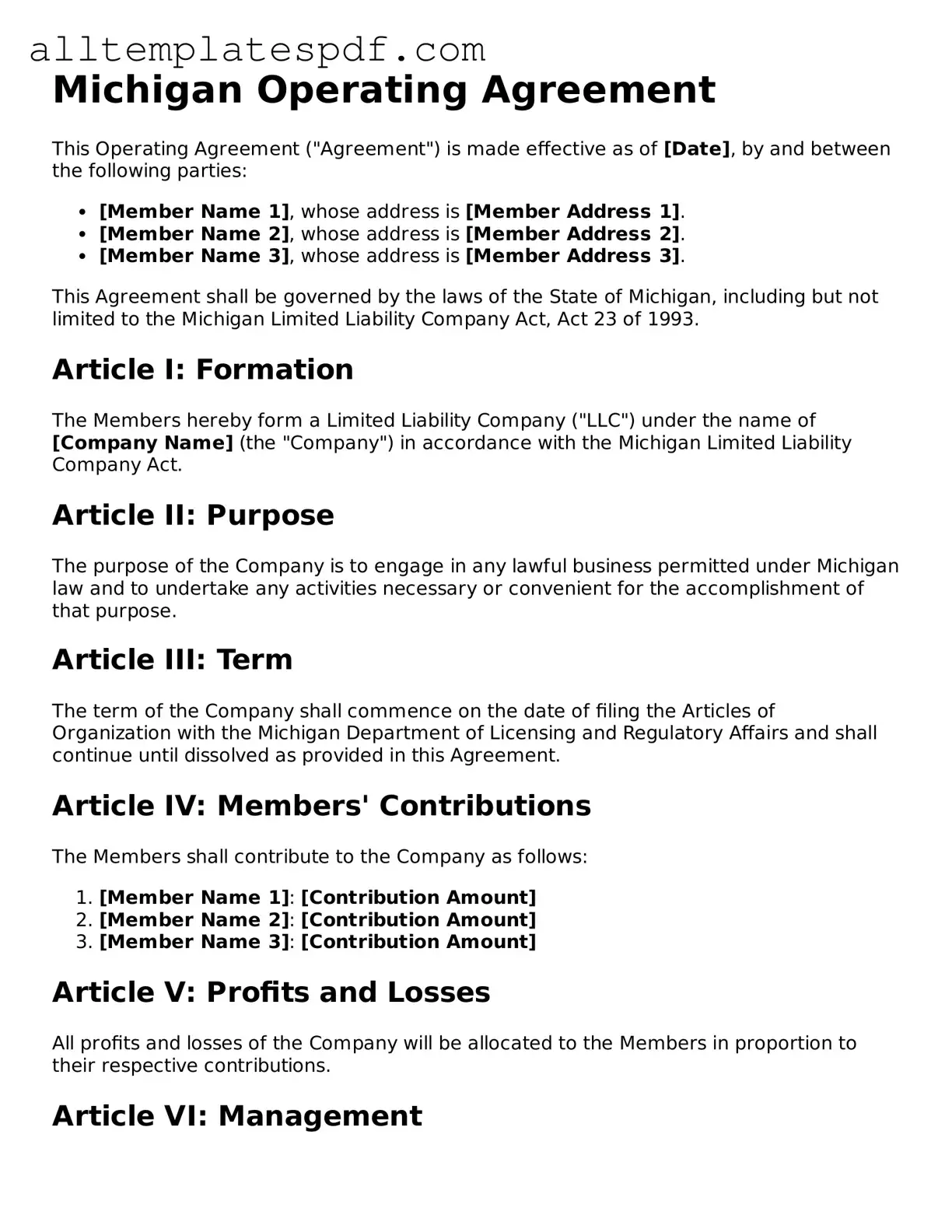Blank Operating Agreement Template for the State of Michigan
The Michigan Operating Agreement is a crucial document that outlines the management structure and operational procedures of a limited liability company (LLC) in Michigan. This agreement serves as a blueprint for how the business will run, detailing the rights and responsibilities of its members. To ensure your LLC operates smoothly, consider filling out the form by clicking the button below.
Open Editor
